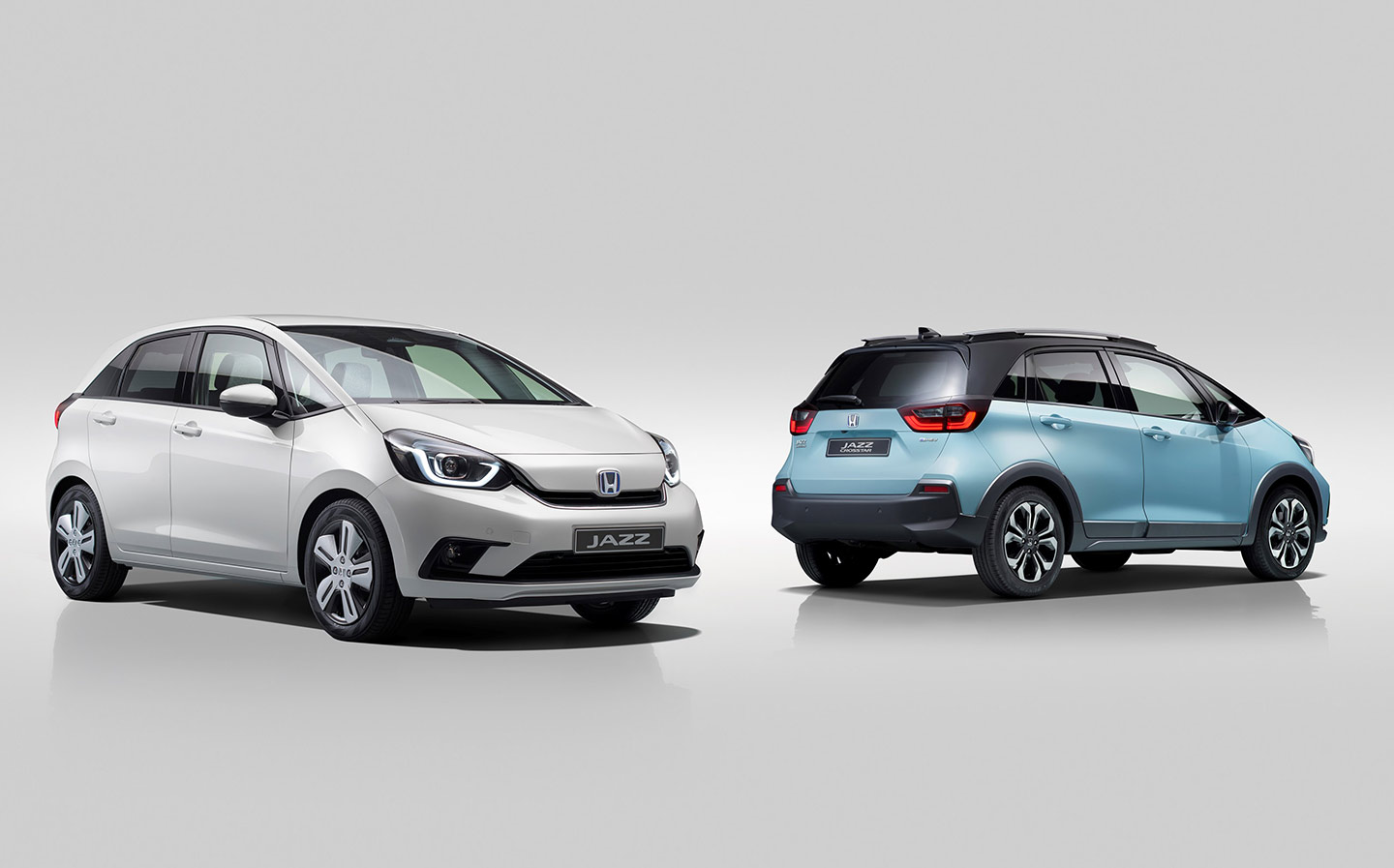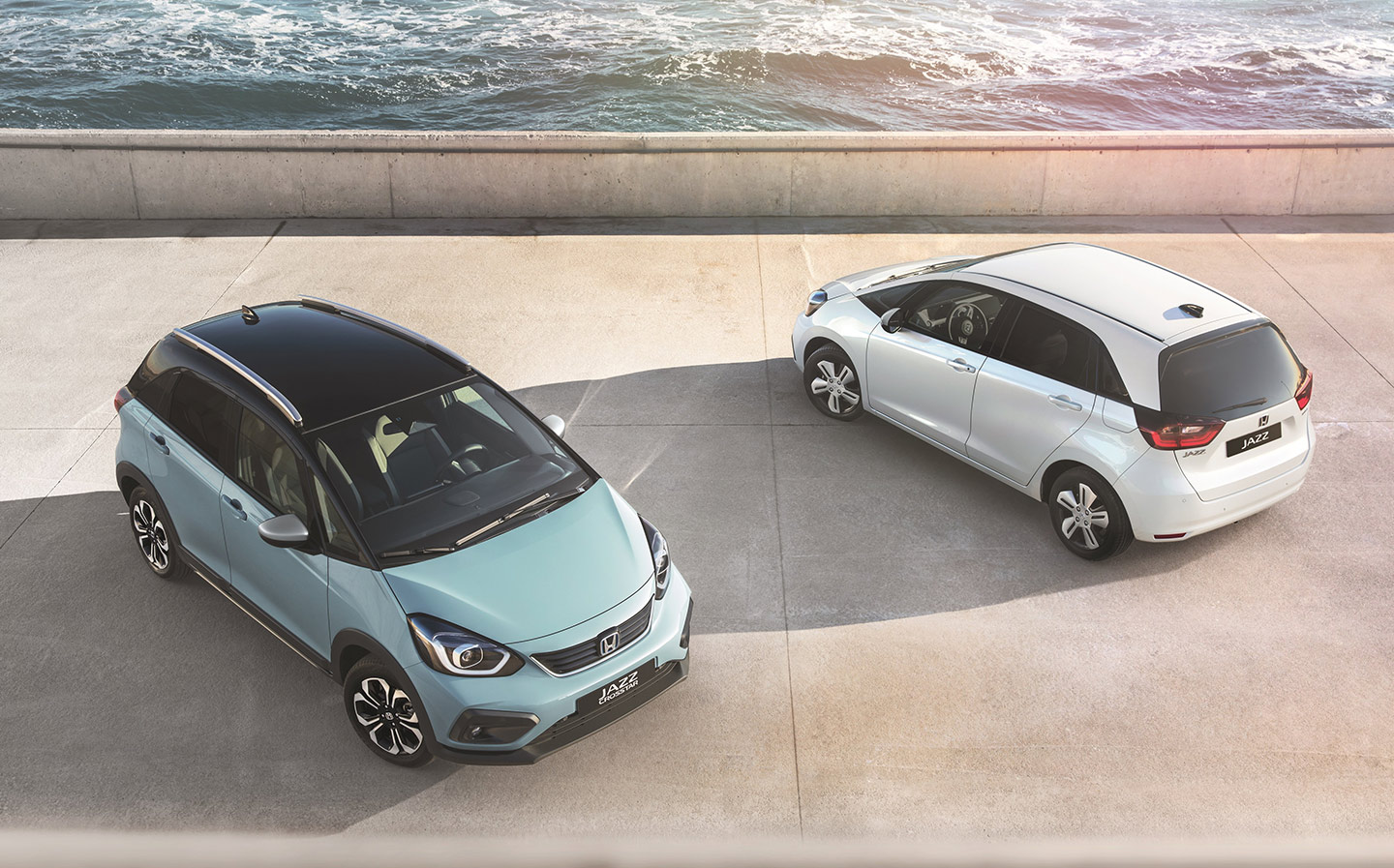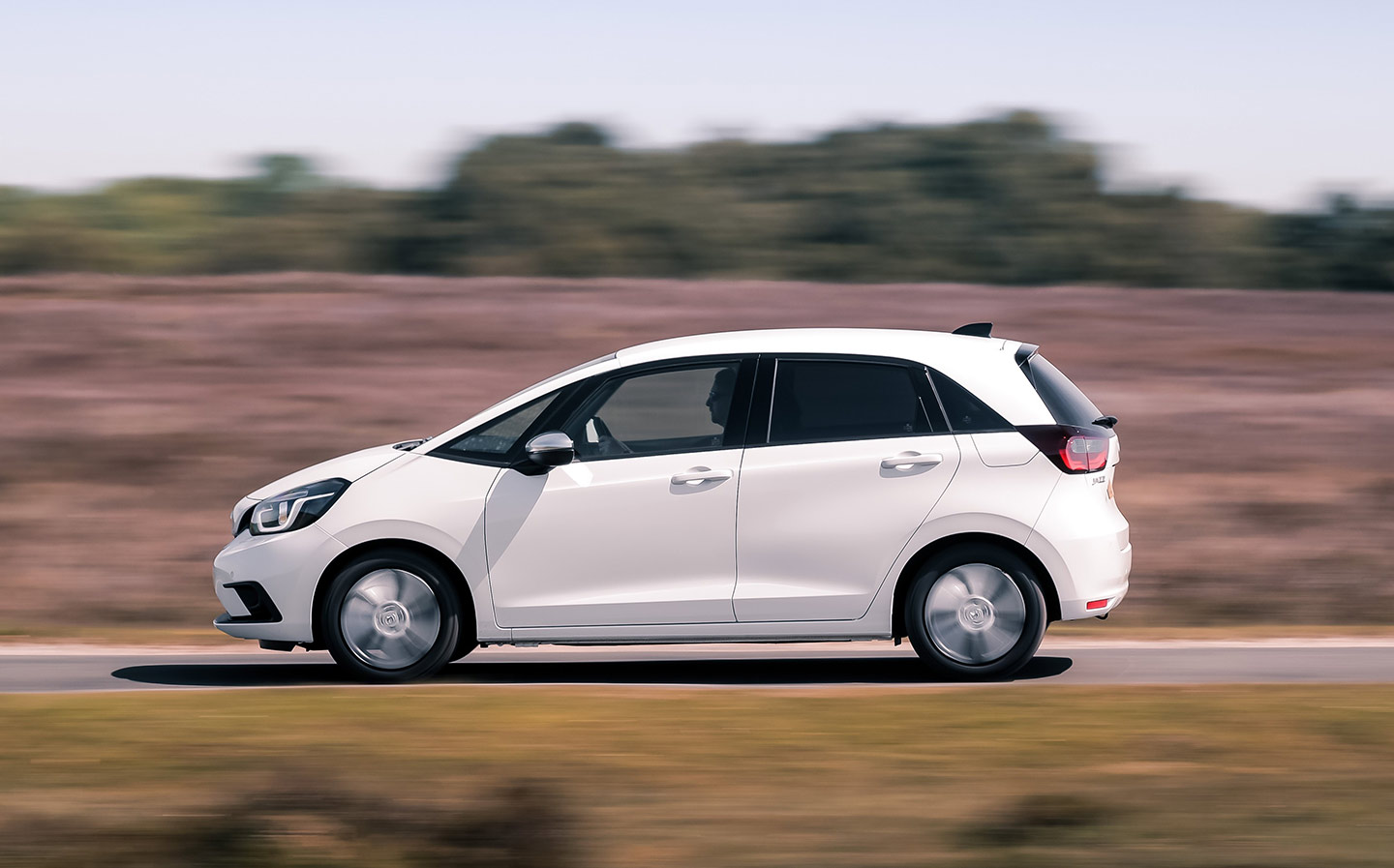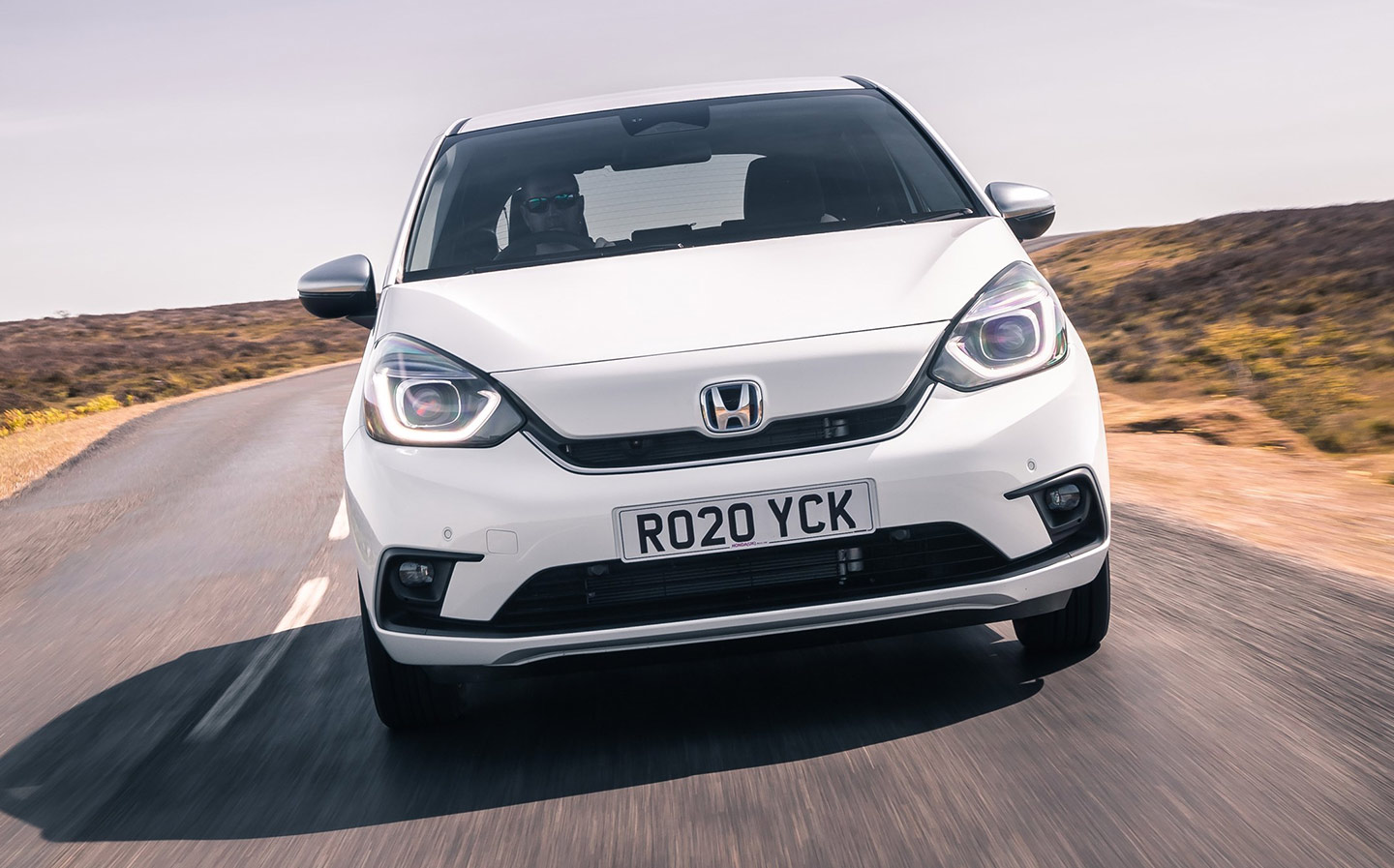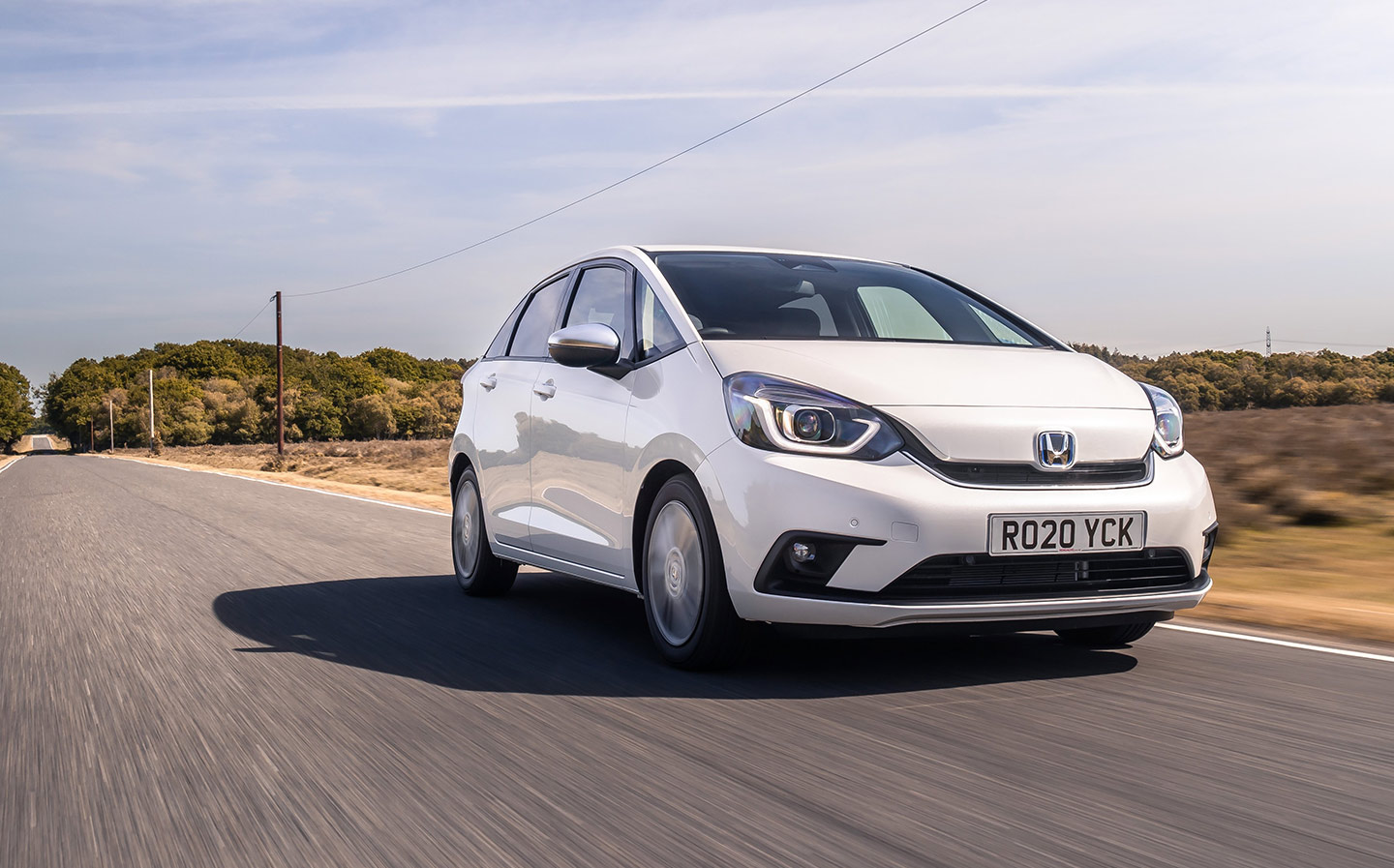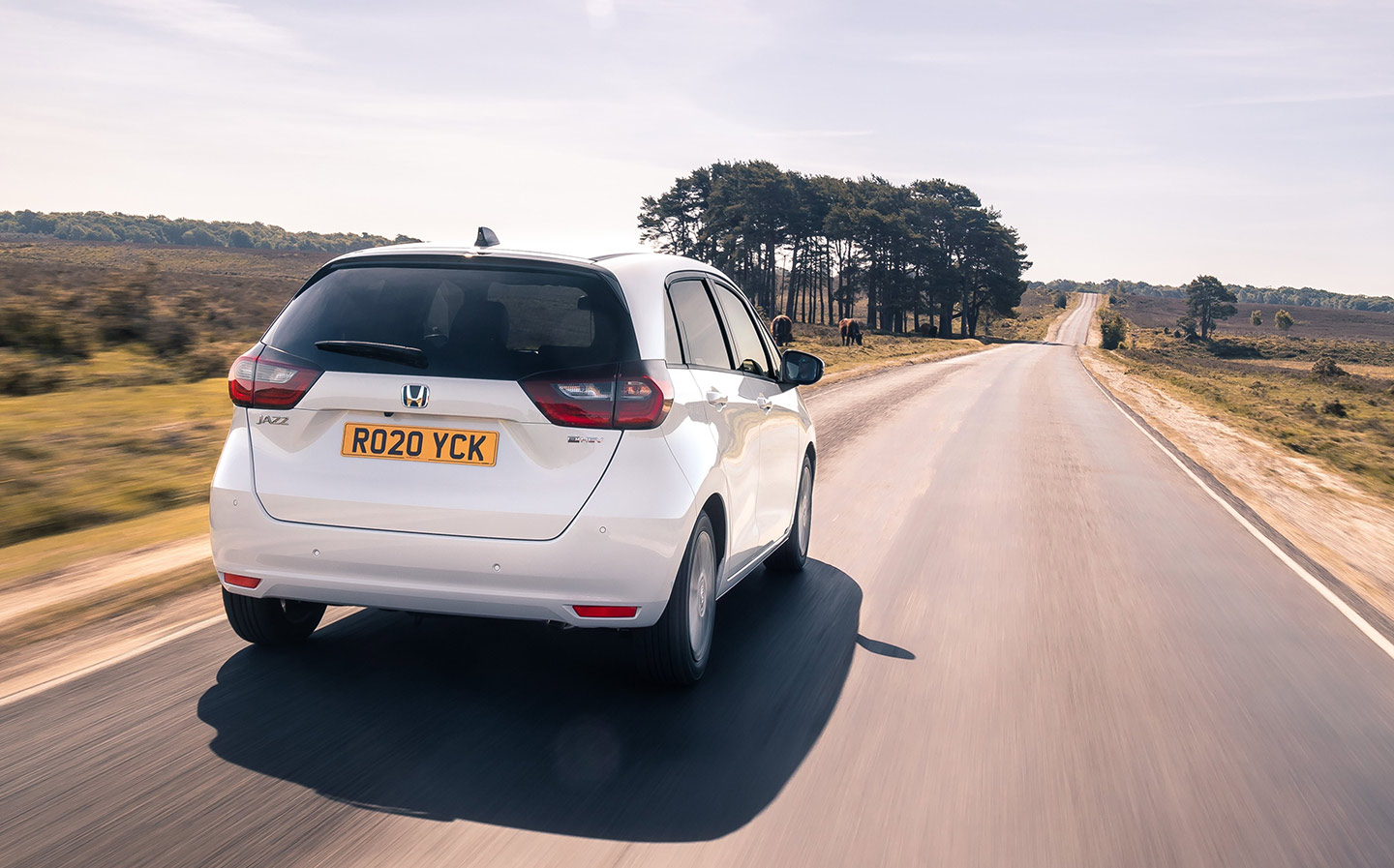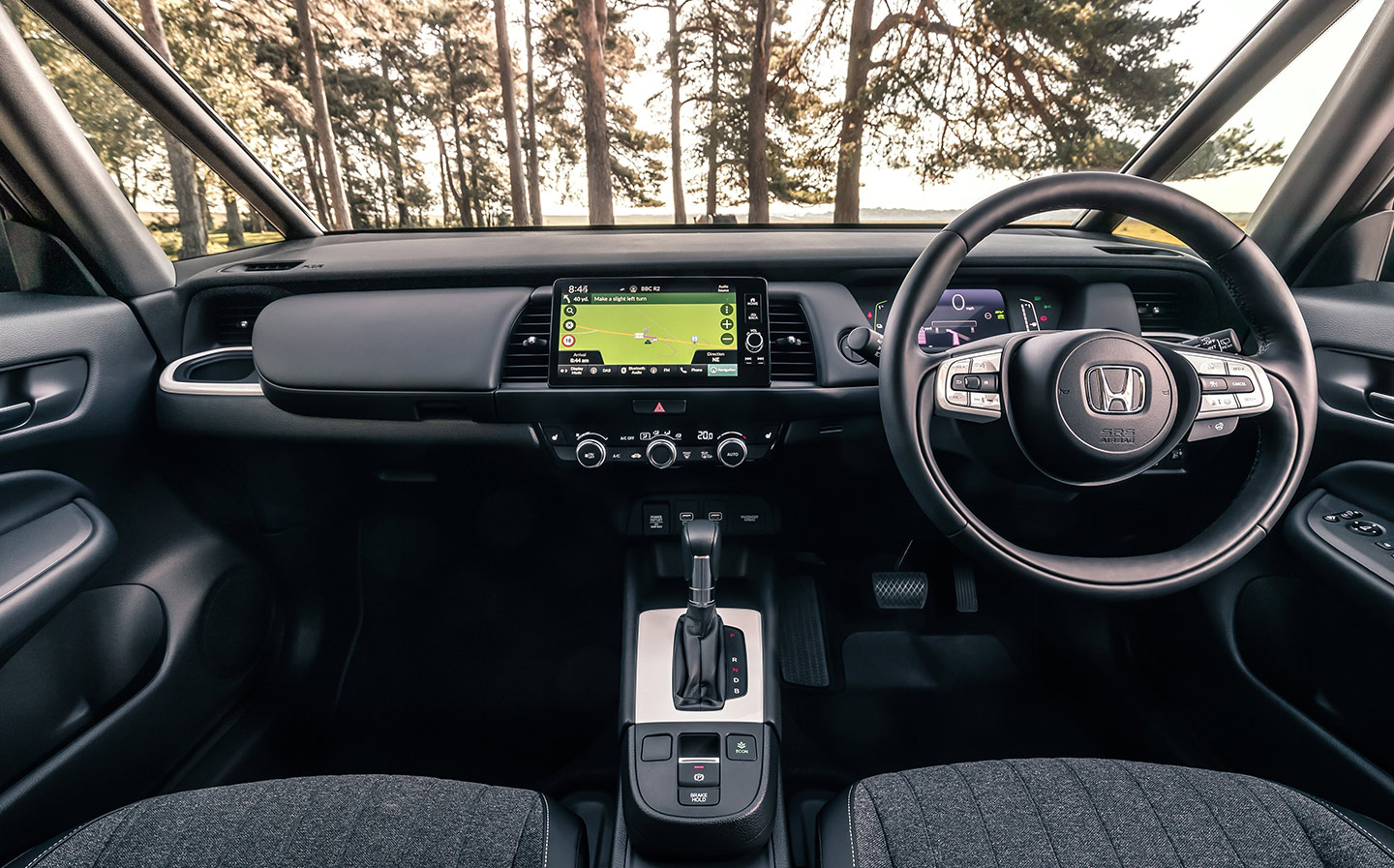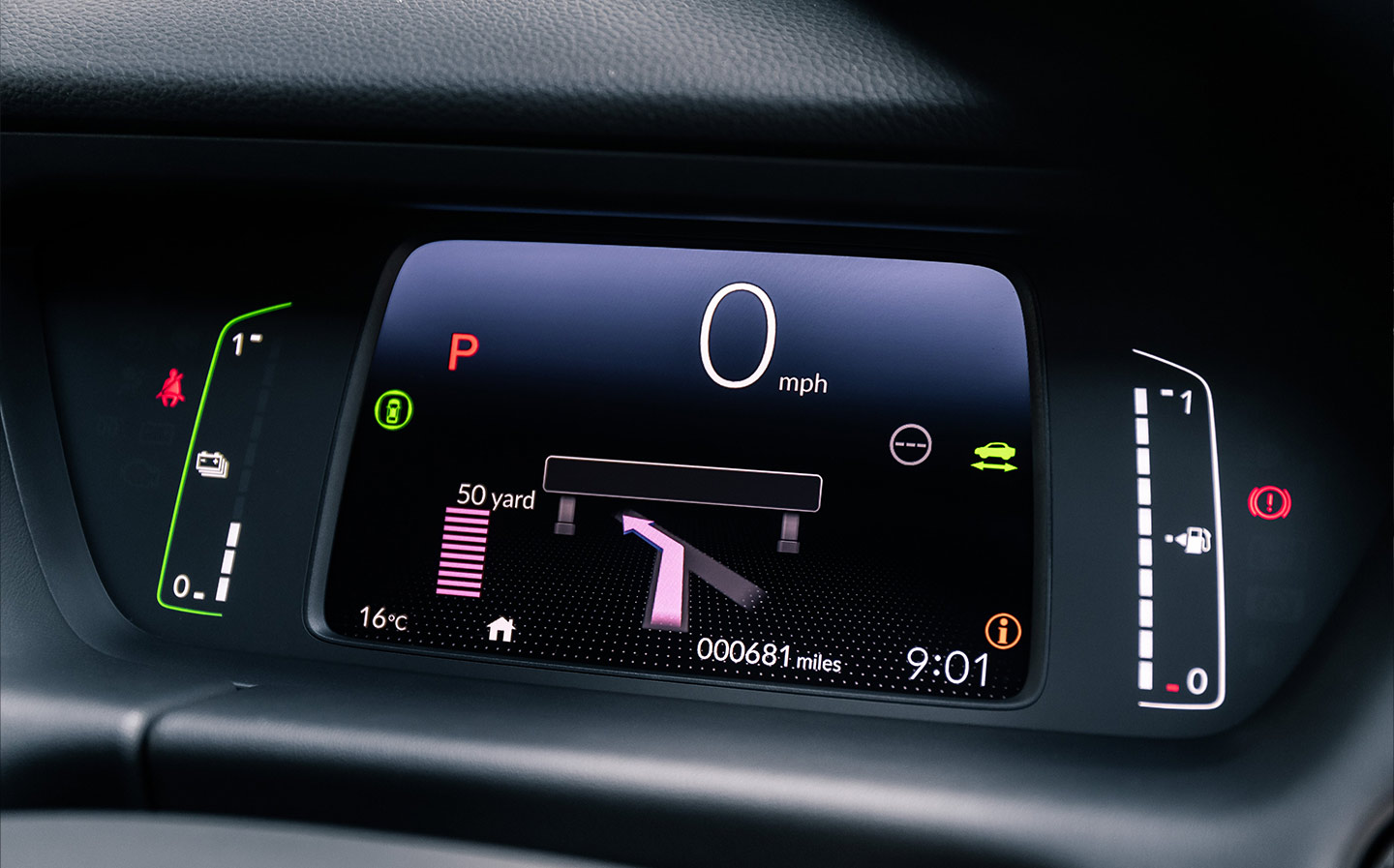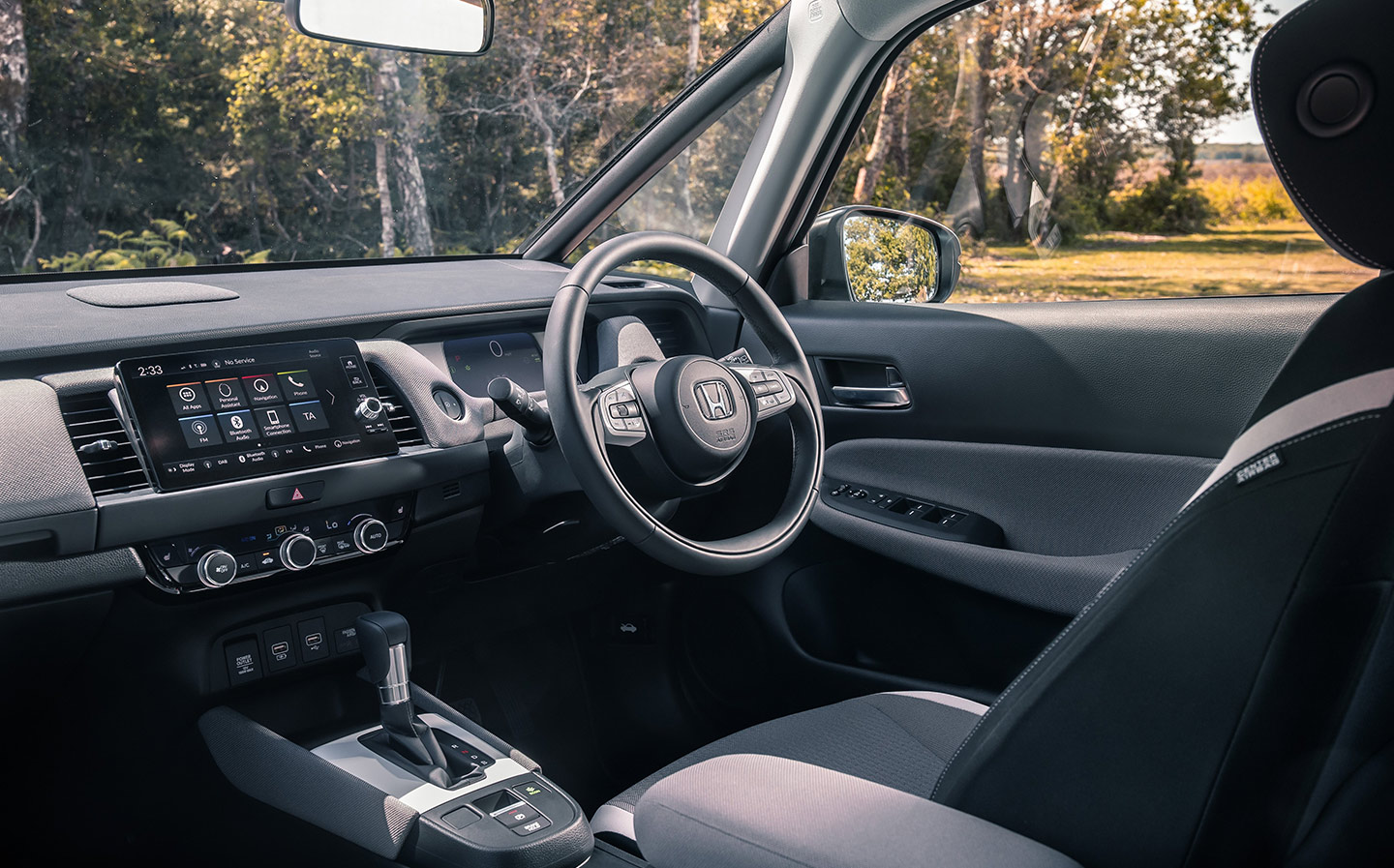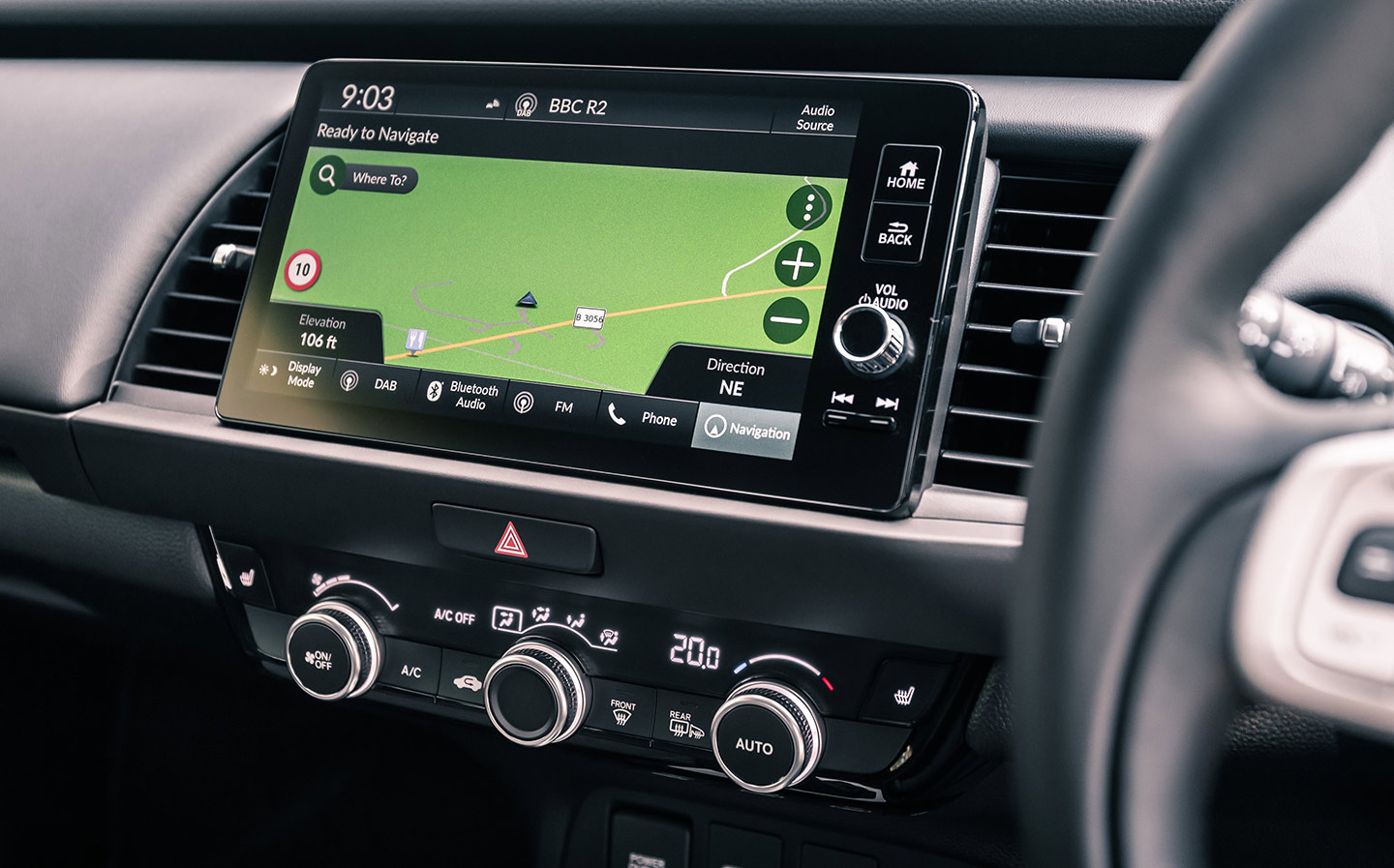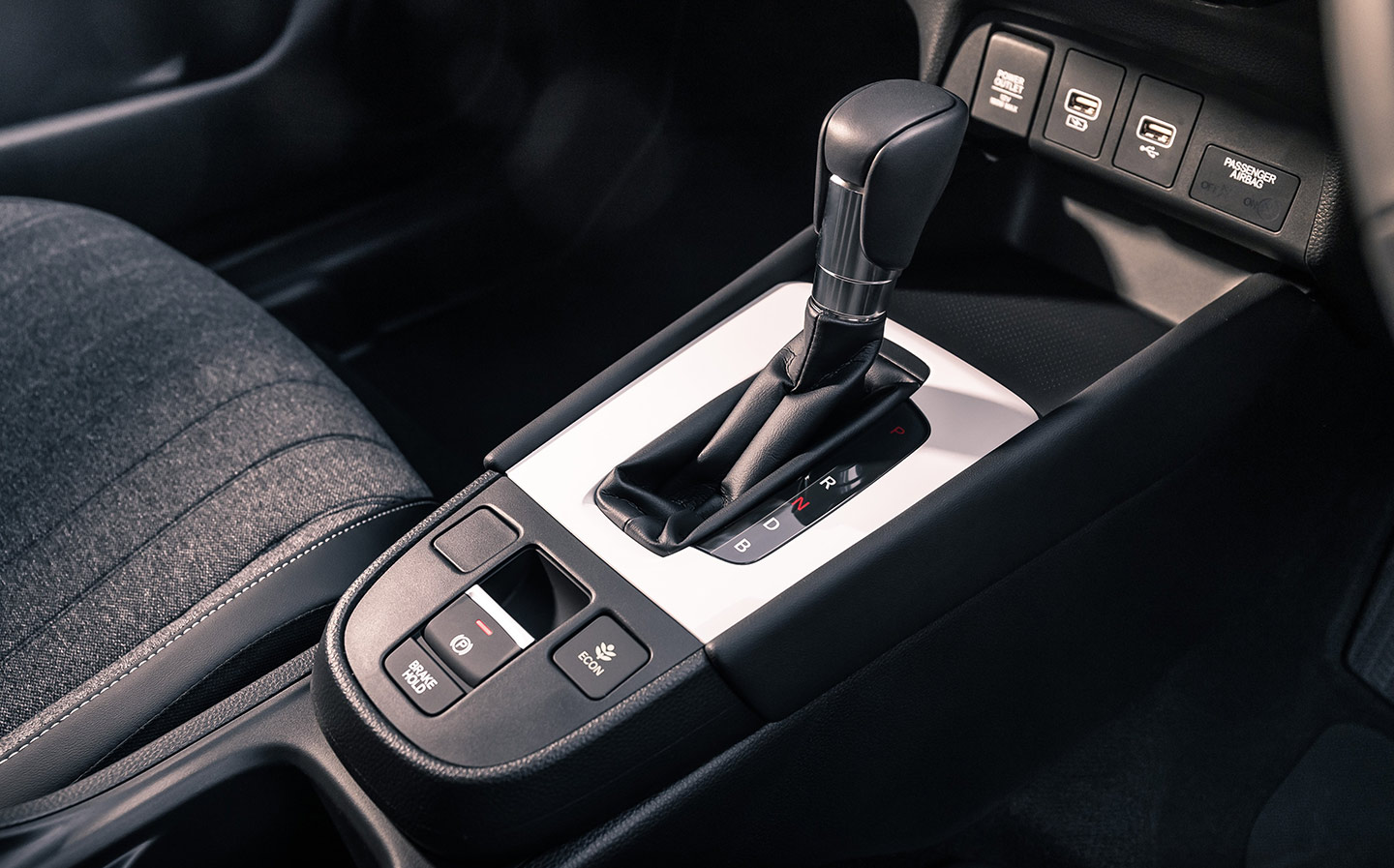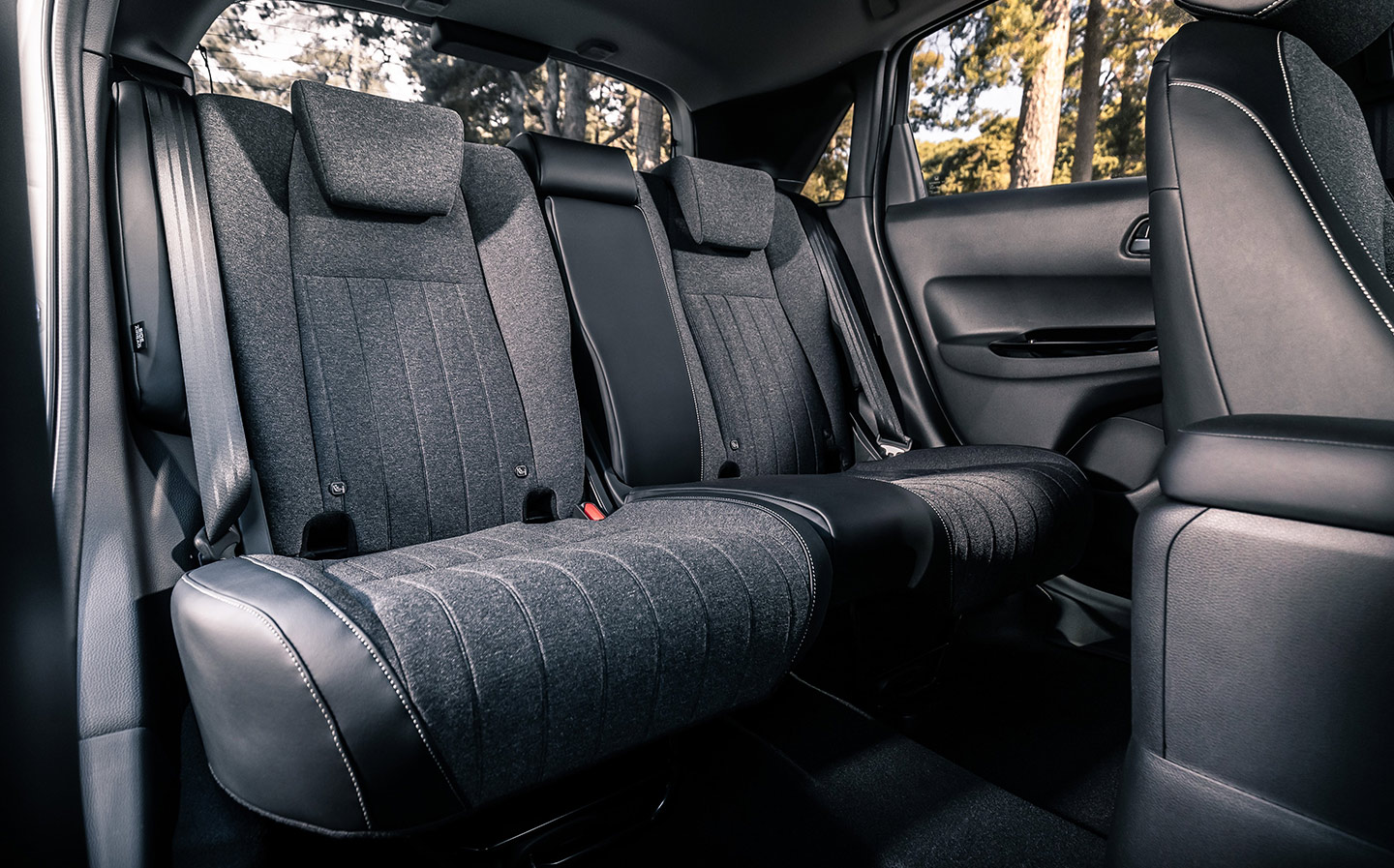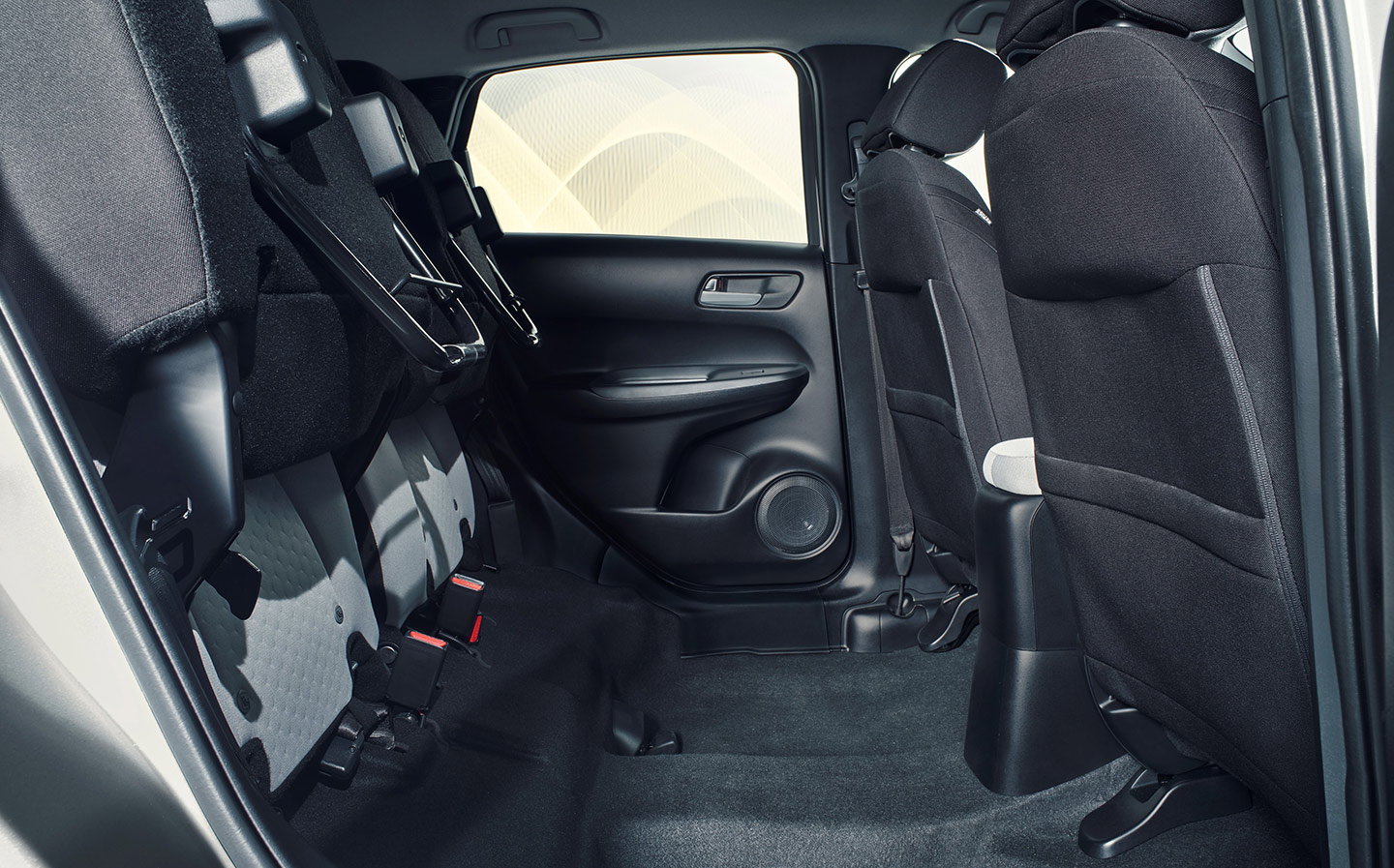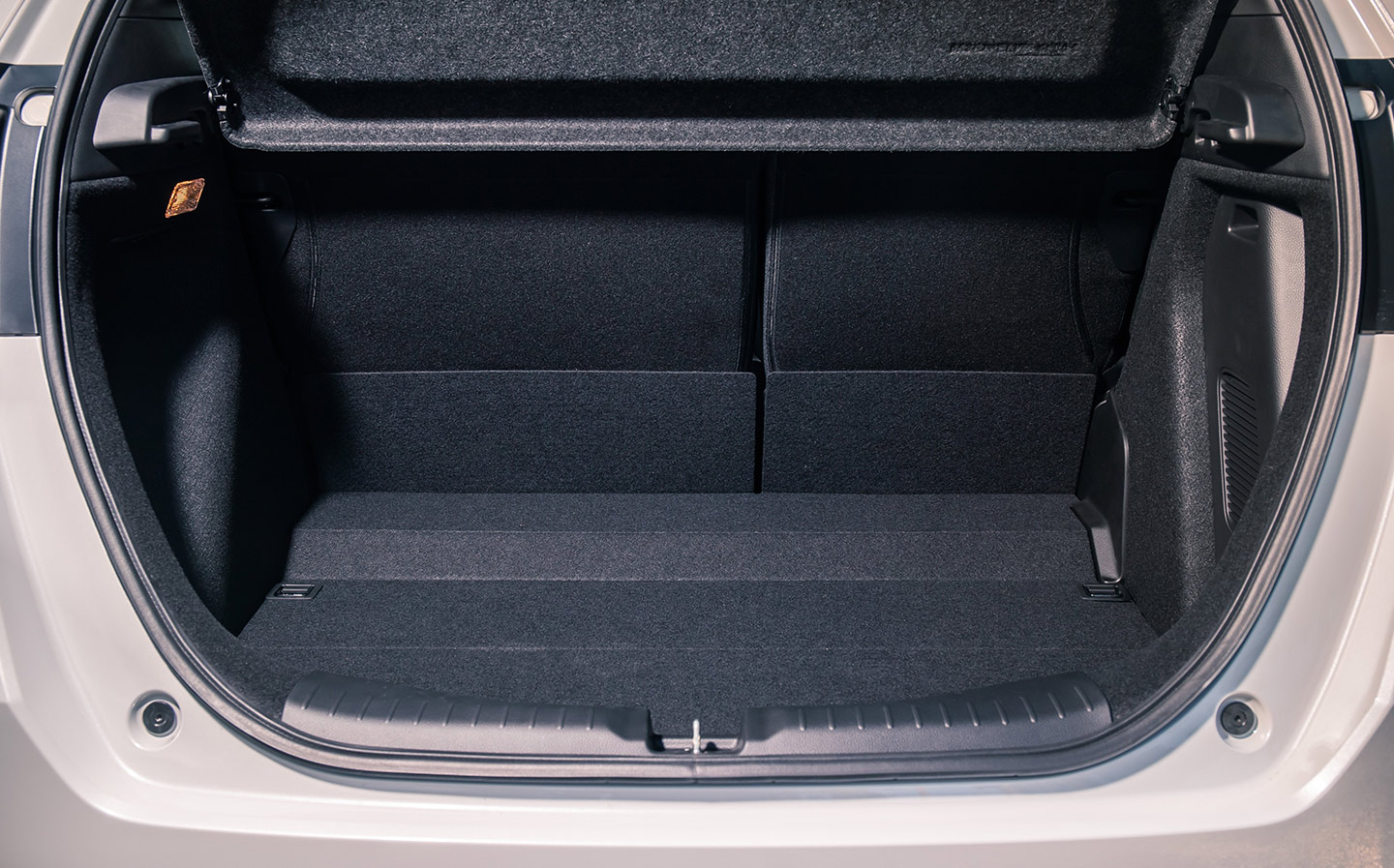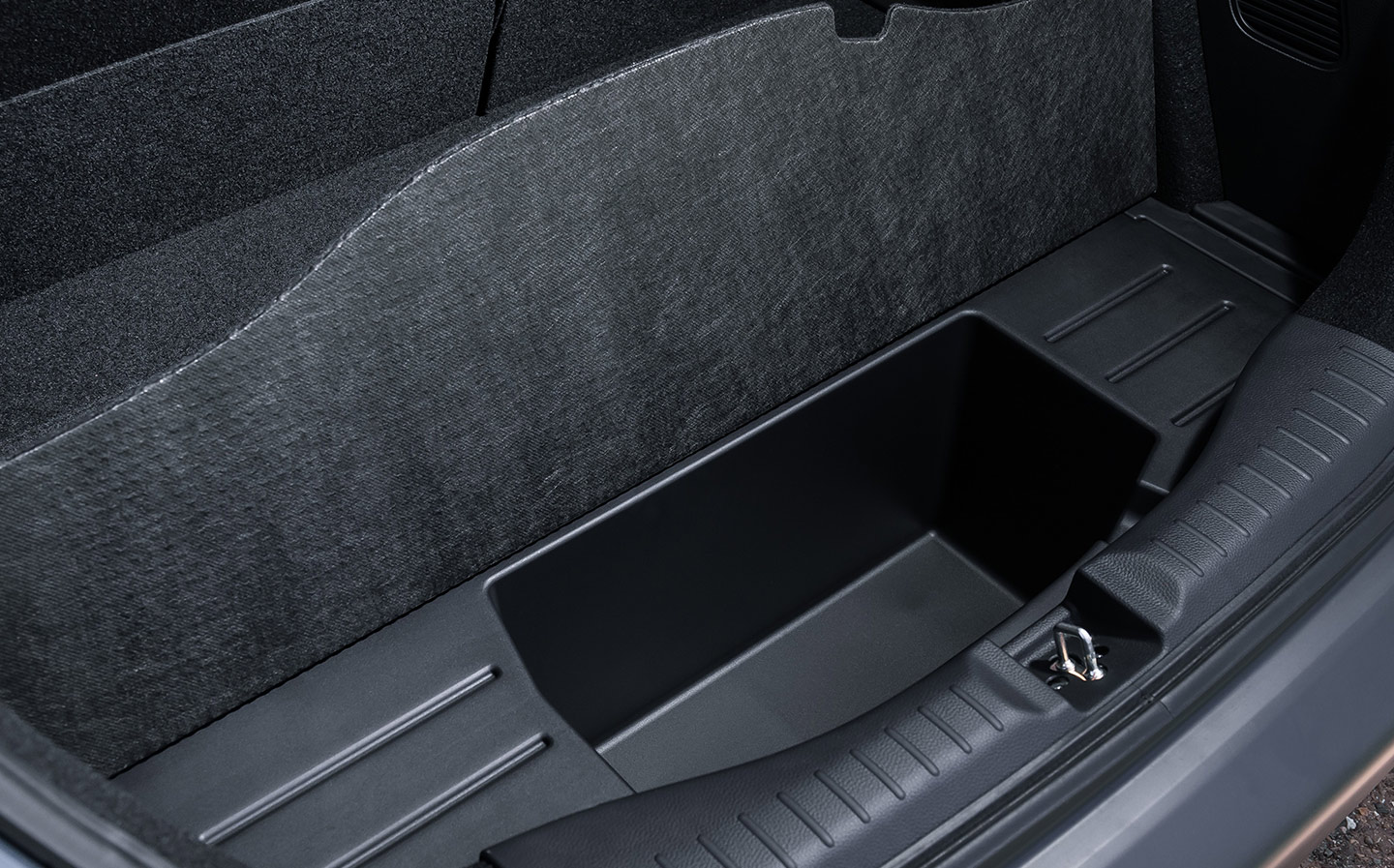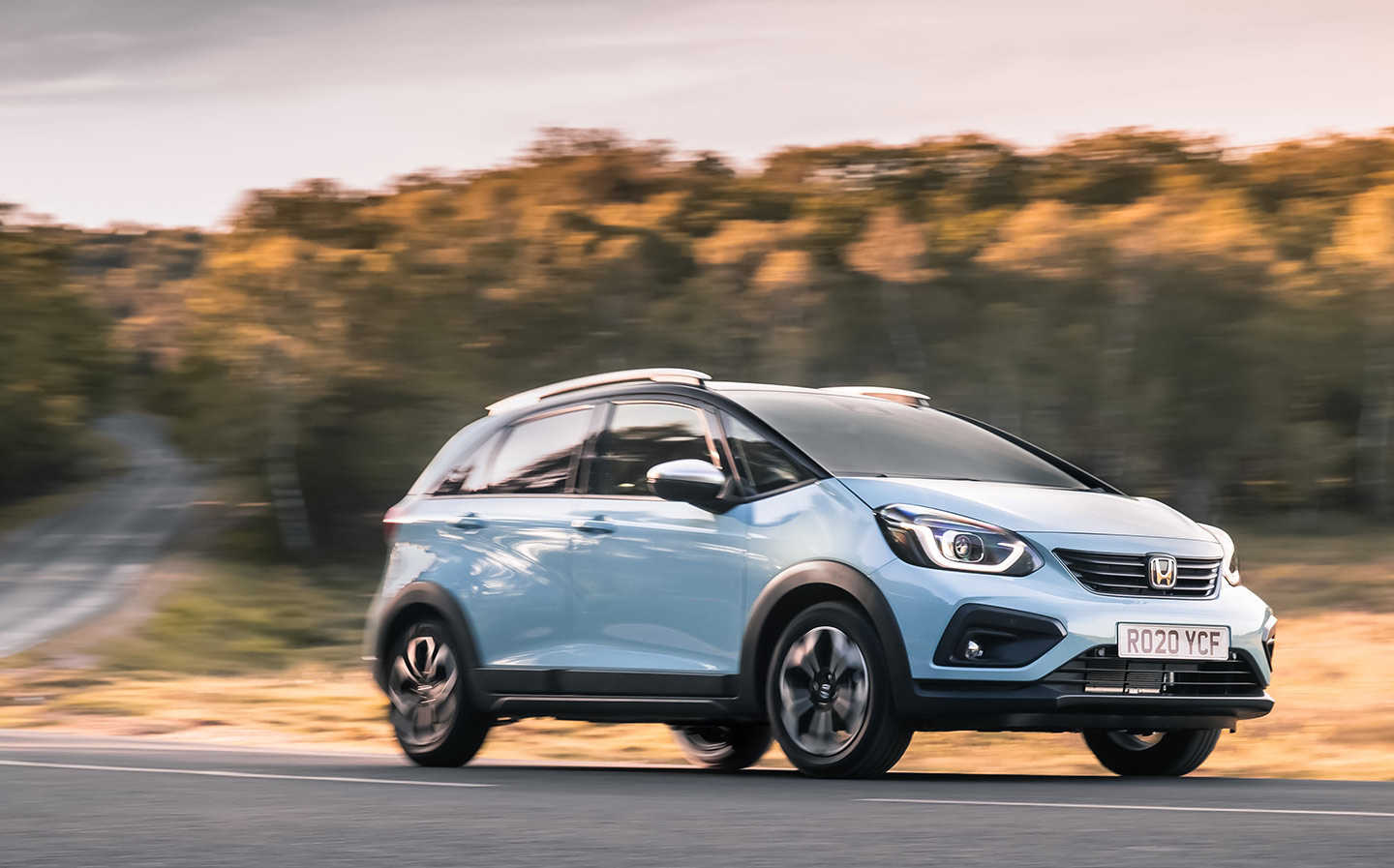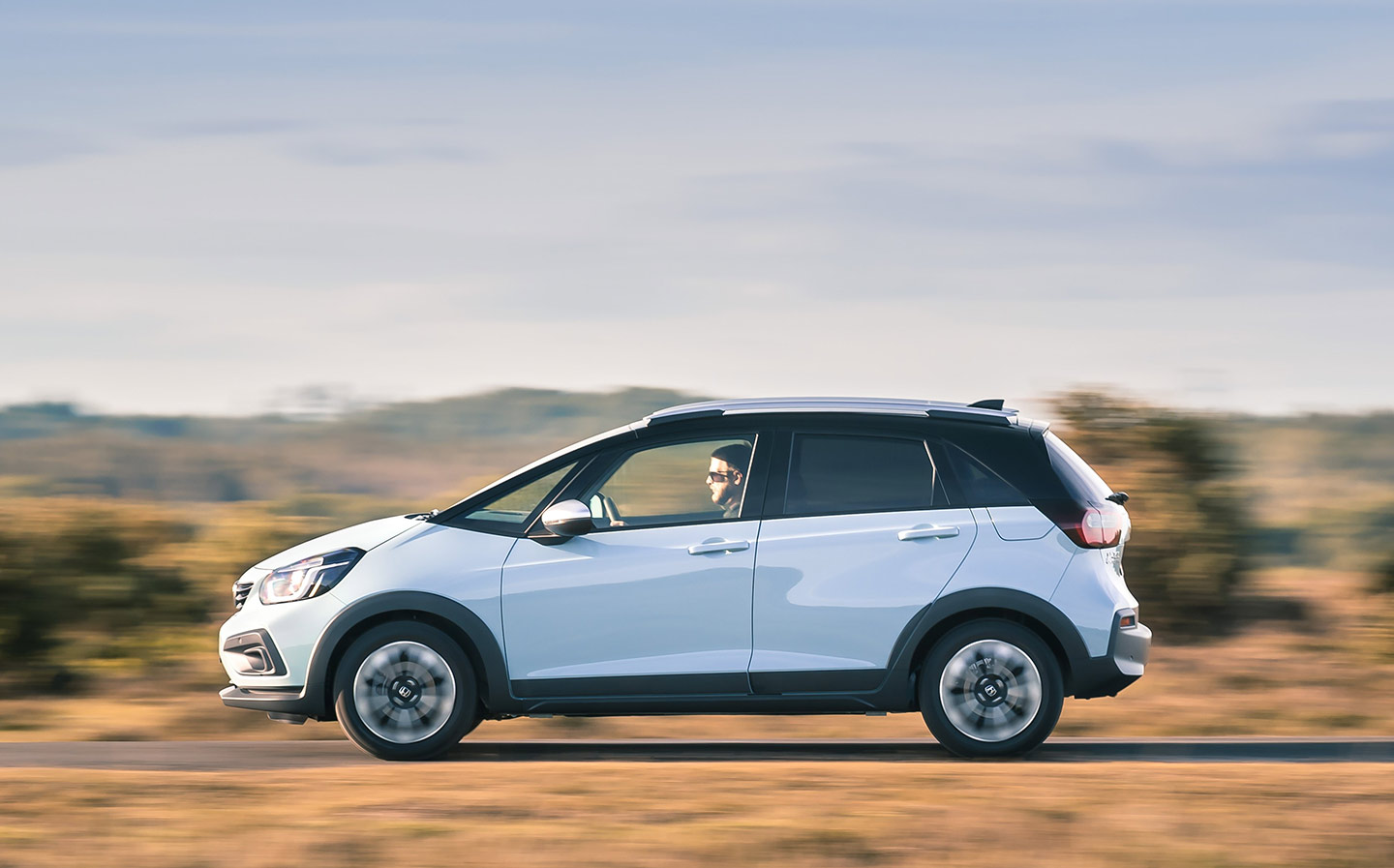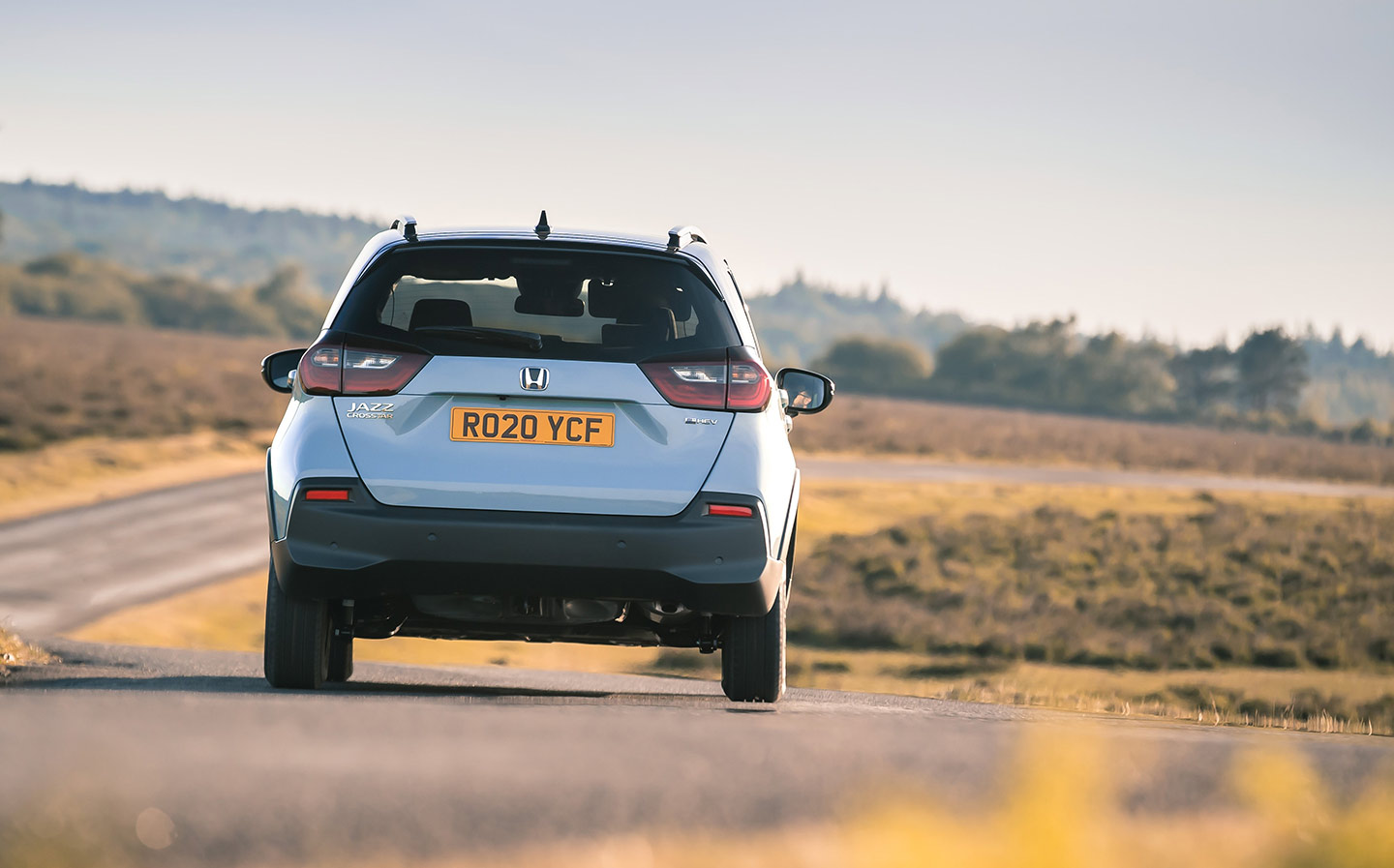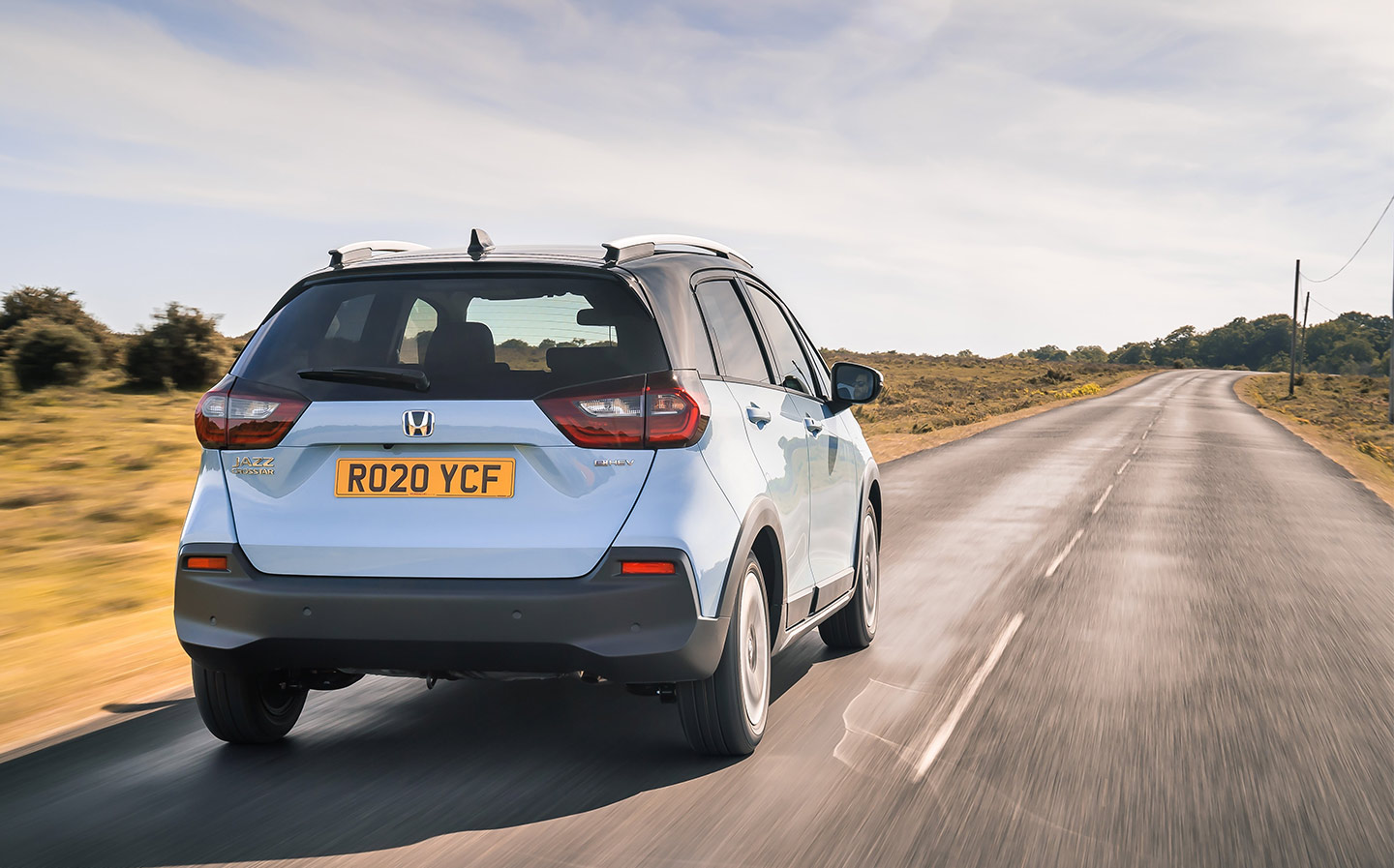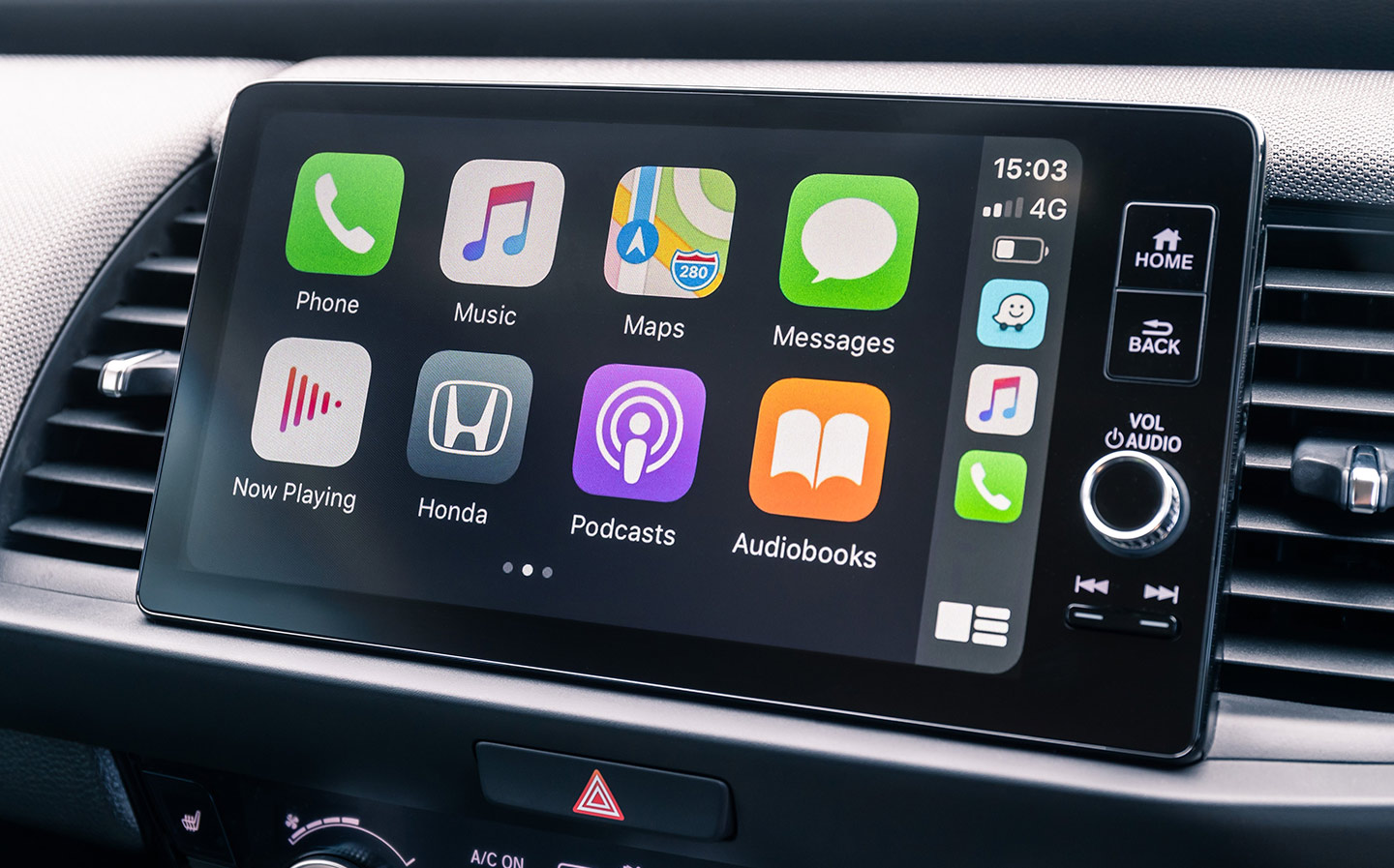2020 Honda Jazz hybrid and Jazz Crosstar hybrid review
Does the new Jazz duet play sweet music or a bum note?
THE HONDA Jazz has always appealed to a very particular type of person. A slightly more experienced customer, shall we say? Whereas the Ford Fiesta, Vauxhall Corsa and Renault Clio have tended to attract younger buyers (and many of them), for whatever reason the Jazz has remained somewhat of a niche option among superminis, more likely to be spotted outside a tea room or in the car park of a garden centre.
Honda will proudly tell you that the Jazz has consistently commanded 4% of the supermini market since 2016, though that’s a bit like being proud of owning a bucket of sand when a whole beach is to play for; the Fiesta was the UK’s bestselling car again last year, after all.
But here comes the new, fourth-generation Jazz to try to claim a bit more of the shoreline. And this time it’s brought a high-riding crossover sibling, called the Jazz Crosstar.
Predictably, what both cars have going for them this time around is a bit of extra space, a much-improved cabin, newer technology, top-notch safety kit, better comfort and updated handling, which errs more towards the ‘fun’ end of the spectrum. Details on all this below.
Critically, though, it’s only available as a hybrid now, as Honda moves to electrify all its core models by the end of 2022. The company clearly has its sights laser-locked on the Toyota Yaris Hybrid, which also has a new iteration out this year. Hybrids are very likely to appeal to a much wider customer base over the next few years, as buyers shift from traditional petrol and diesel models, and Honda wants in.
With the Jazz Crosstar, Honda is taking aim at the likes of the Ford Fiesta Active. And besides, it’s now law for every car maker to have a small crossover variant, apparently. Toyota launches its Yaris Cross next year.
The Yaris is another car that tends to appeal to older drivers, though Toyota has gone out of its way in the last two iterations of the car to make it funky and angular, to give it a bit more youth appeal. Honda had a go at this with the Mk 3 but this time appears to have given up and gone with the blandest, most vanilla look imaginable for the Jazz. Apart from, that is, its face, which appears to have a cleft palate.
The Crosstar has a different look but it’s equally unappealing to my eyes. The proportions seem wrong somehow, particularly the size of the headlights versus the grille, and the down-up-down swish of the doorline.
Inside either car (for the cabins are near-identical) there’s much, much better news. The first thing you notice is how spacious it feels. Even for a 6ft 5in-er there’s headroom to spare, and there’s plenty of space around the shoulders. The sense of roominess is amplified by the remarkable forward visibility, through the steeply raked windscreen but also the via the ample “quarterlight” glazing at each edge.
Honda has been clever here: the A-pillars, which usually flank the windscreen, have been given a kink and now run up further back, to frame the door; the windscreen is held in place by much narrower pillars (less than half the width) that don’t form part of the crash structure. Amusingly, these have been labelled “pillar garnish” by the car maker, though the effect is no joke: the forward field of view is up from 69 degrees in the old model to 90 degrees in new one.
The temptation is to say that this will help the Jazz’s ageing customers see obstacles before they hit them, but that would be lazy writing — the truth is that this is a major benefit for all customers, regardless of age, and fixes one of the major issues caused by ever-tougher crash test standards.
Combined with large side windows, a lot of light is let into the cabin, which bathes a more pared-back dashboard than before. There’s an expanse of black plastic immediately under the windscreen but below that, the dashboard is pleasingly attractive, with rounded corners and interesting alcoves abounding. Its design isn’t anywhere near as high tech as the one found in the Honda e (the digital driver’s display is decent to my eyes but some have thought it little ‘busy’), though the horizontal layout apes it to some extent, as do the lounge-like soft-touch materials.
Honda says seating comfort was a key focus of development, with completely redesigned front perches using a 30mm thicker cushion and rubber matting inside the backrest, rather than springs. They must be good as I forgot about them entirely during my drive was more impressed by the relatively comfortable driving position for taller drivers. The pedals were slightly too close for my liking, which meant my right leg began to ache after an hour or so, but for a small car it’s very cleverly-proportioned inside.
Storage is smart, too, with cupholders at either end of the dash, a couple in the centre console and space for large bottles in the door. Other cubby holes include a tray in front of the gear selector and one within the central armrest. There are two glove boxes, one in the usual position and another that opens upwards. It’s not large but you could easily fit a tin of boiled sweets and a pair of driving gloves in there, for example.
Although the cabin has been made more minimalistic and the forward view has been decluttered by hiding the wipers, it’s noticeable that Honda hasn’t gone as far as some other manufacturers have in wiping away physical controls: the air conditioning system is operated via three dials, and the stereo has a volume knob and physical ‘Home’ and ‘Back’ buttons.
Compare this with the likes of the new VW Golf (which is in the class above but illustrates the way car makers are going with interiors) with its almost-buttoness dash, and it’s clear Honda is not readily sacrificing ease-of-use for clean lines.
One thing that both the interior designers of both the Golf and Jazz have realised is that a bumpy road and a touchscreen do not mix well and so added a thumb rest below the interface, as an anchor for your hand. Once, in another car, a particularly uneven surface resulted in me selecting LBC radio by mistake — the horror.
The touchscreen layout is a huge improvement on previous Honda systems, too, with a much more intuitive menu system inspired by those found on smartphones. Honda claims that finding what you needs take 58% less time than in the third generation Jazz, which obviously means more time with your eyes on the road.
And despite the cabin appearing less futuristic than the likes of the Golf or the new Honda e electric city car, the Jazz is pretty high tech. A basic 5in infotainment screen comes as standard on the entry-level SE model but the next version up, SR, gets the larger 9in touchscreen with Apple Carplay and Android Auto as standard, while Garmin sat nav is included on the top EX grade.
Climate control, automatic windscreen wipers, heated and electrically-folding side mirrors, cruise control with lane-keep assist and traffic sign recognition, and dusk-sensing headlight all come as standard.
An optional artificially-intelligent voice assistant allows more natural questions to be understood by the car, such as “What’s the weather looking like this afternoon” and “Can you find me a good Italian restaurant nearby?”
There’s also a phone app that allows you to locate your car using GPS, lock and unlock remotely, and add geo-fencing (you get an alert if the car leaves a specific area). You can even turn the car into a WiFi hotspot for an optional subscription fee, though I’ve never seen the appeal of this since you can do this with your own mobile phone, too.
What’s more impressive is the suite of safety features included even on ES models, including additional airbags for the front occupants’ knees, between the driver and front passenger, and inside the rear doors. All Jazzes get auto-emergency braking, and interestingly Honda has removed the front radar, claiming a new, more sophisticated front camera is more effective at detecting objects. It performs better at night, says the company, and can now spot cyclists much better.
Where the Jazz really scores points is in practicality. Six-footers will be able to sit comfortably in the back, behind other six-footers, making it feel much more like a hatchback of Golf or Ford Focus size. And Honda has retained its trademark “Magic Seats” in the rear, of course; flip them up and, because the fuel tank is under the front seats, you get a brilliant space from floor to roof in which to carry tall cargo. My mother-in-law swears by her second-generation Jazz’s magic seats when purchasing pot plants.
The rear seats also fold flat for long items, yielding a full 1,205 litres of luggage capacity, or 304 litres in the boot with the seats up (compared with 281 litres in the new Yaris). Contrary to expectations, there’s slightly less luggage space in the Jazz Crosstar than its lower-riding sibling, with 298 litres in the boot and 1,199 litres when the rear seats are folded. Both cars have a handy storage bin under the boot floor.
There’s good news out on the road, too. Previous Jazzes have never been bad to drive but you couldn’t describe them as remarkable. The fourth generation model still isn’t as dynamically entertaining as a Ford Fiesta but it’s a step up in driver engagement for sure.
At the heart of both Jazz and Jazz Crosstar is the hybrid powertrain, which is substantially different to the one found in the Jazz’s chief rival, the Toyota Yaris Hybrid. As this isn’t Autocar magazine there’s no need to go into great detail, though basically it’s the same set-up as found in the CR-V Hybrid, with a petrol engine supported by two electric motors, one used as a generator and one used to drive the wheels. The Jazz’s 1.5-litre petrol engine can drive the wheels via a clutch, though that mostly happens at higher speeds (over 50mph) — most of the time the clutch is disengaged and wheels are turned directly by the propulsion motor. Maximum power is 108bhp, and 0-62mph in the Jazz takes 9.4 seconds — nearly a second sprightlier than the new Yaris Hybrid.
Honda says its “e:HEV” system stays in its most fuel efficient state for more of the time compared with a petrol equivalent; the Jazz returns up to 62.7mpg and the Jazz Crosstar manages up to 58.8mpg — over a 65-mile route we managed 65.9mpg and 60.1mpg respectively, in fact.
That’s decent, but sadly for Honda, Toyota is about to massively outgun the Jazz on this front with the new Yaris Hybrid — reports suggest that is capable of more than 100mpg. Which is, quite simply staggering. And CO2 in the Yaris is said to be 89g/km versus the Jazz’s 102g/km. [UPDATE: The 2020 Toyota Yaris Hybrid’s official fuel economy and CO2 figures are now available and those reports wildly overestimated its efficiency, with 57.6-65.6mpg and 98-112g/km, making the Honda Jazz Hybrid highly competitive.]
Honda errs slightly more towards performance and keen handling than its native rival, though, and what’s really impressive about the new Jazz Hybrid is that it doesn’t provide the sluggish, soul-sapping experience behind the wheel you’d expect of a hybrid. It has more torque (twisting force from the powertrain to the wheels) than even its non-hybrid 1.5-litre turbo petrol predecessor, meaning it feels punchier under acceleration.
You can feel this away from traffic lights, and put your foot down out of corners and the car feels willing and eager rather than sleepy. That’s assuming you’re not in Econ mode, which does significantly limit gusto.
The Jazz is a little longer than before (14mm) but the distance between the front and rear wheels is the same, as is the width and track. However, it’s 24mmm lower and Honda has increased the strength through the body (for the engineers, torsional rigidity is up 13%), and a tauter structure means more predictable handling, as the work of the suspension isn’t diluted through body flex.
The suspension itself has been updated at the front for less friction and less roll at the rear, resulting in a more stable ride. Over bumps it’s remarkably good, soaking up the initial compression but minimising rebound, making city driving less of a rollercoaster ride, and out on B-roads it’s actually pretty good fun.
The steering is a little lighter than before, though it’s variable depending on speed; it’s nice and light in supermarket car park but more responsive at higher speeds. There’s a nice weight to it in most conditions, though, and the wheel likes to find the centre position, reducing the chances of the the car tending to wander in lane.
You’ll notice I haven’t differentiated between the Jazz and Jazz Crosstar as the same is true in both, and although the Crosstar rides 29mm higher than its supermini sister, with larger wheels and 10mm wider tyres, the way it feels to drive is remarkably similar.
Also remarkable in both cars is the refinement — wind and road noise are kept at bay remarkably well for such a small car, and even the noise from under the bonnet isn’t noticeable when cruising around. Put your foot down and, yes, the petrol engine creates a din, but at least that’s translated to immediate motion, rather than having an elastic delay while the car catches up with the input from your right foot.
With the new Jazz, Honda has produced a superb package offering excellent comfort, superb forward visibility, class-leading versatility, decent economy and — dare we say it — engaging driving dynamics. Pricing is competitive, the Crosstar model will suit those who need a little extra ground clearance, and the kit is good.
It’s just a shame those disappointingly bland looks are unlikely to appeal to younger customers.


